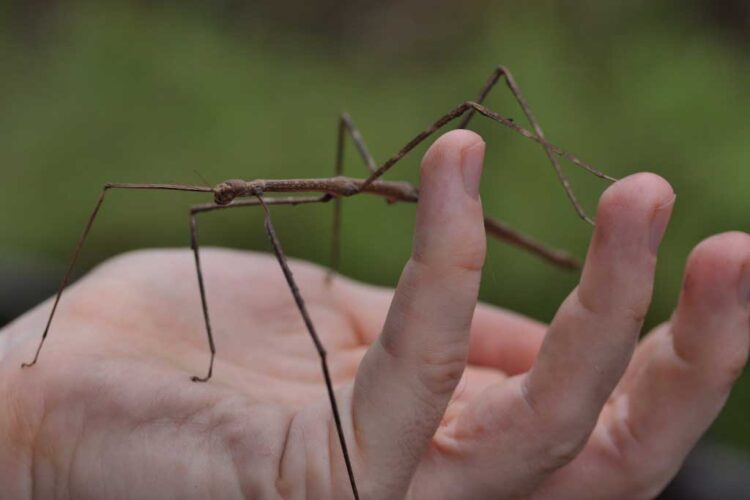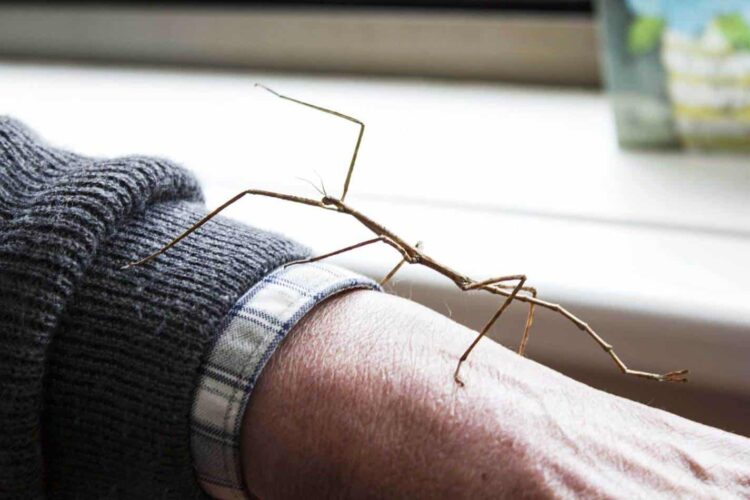Table of Contents
If you are considering buying stick insects, or you are a new stick insect owner, there are probably lots of questions you would like answered. For example, you might be wondering what happens if one of your stick insects loses a leg; after all, you have heard all the stories about how fragile these creatures can be.
And because stick insects are indeed quite fragile, it is not uncommon for them to lose a leg, especially if they are not handled correctly. It is for this reason that it is extremely important to take care when lifting your sticks from an enclosure. To this end, one of the questions I get asked quite often is can stick insects re-grow legs? The answer to this question is that it depends on the age of the stick insect.
Whether or not a stick insect’s leg will regrow depends largely on when the leg is lost. If the leg is lost before adulthood, it is likely to eventually regrow. With each moulting, the new leg will get a little bigger; after about three moults, it should be the same size as the other legs. Nevertheless, if the leg is lost after the stick insect has reached adulthood , it will not regrow.
, it will not regrow.
For more advice and information on keeping and looking after stick insects, check out my ebook on Amazon click here
(opens in a new tab).

What Happens if a Stick Insect Loses a Leg?
Before we get into that though, it might be prudent to look at the reasons stick insects lose their legs . As mentioned above, quite often it can happen when the stick is handled roughly. It can also happen when the stick insect is removed from its enclosure, especially when it is attached to a twig or leaf and won’t let go (which they usually don’t). They can also lose legs when moulting.
. As mentioned above, quite often it can happen when the stick is handled roughly. It can also happen when the stick insect is removed from its enclosure, especially when it is attached to a twig or leaf and won’t let go (which they usually don’t). They can also lose legs when moulting.
Stick insects shed their skins a number of times before reaching adulthood. During every moult they will grow a little bit. Sometimes a leg can get lost during the shedding of skin, but this tends to only happen if the enclosure is not high enough to allow room for shedding to occur or if the air within the enclosure is too dry. Your tank or enclosure needs to be at the very least twice as high as the length of an adult stick insect and that you are spraying it with water regularly to keep the air humid. This can help prevent the loss of limbs during shedding.
their skins a number of times before reaching adulthood. During every moult they will grow a little bit. Sometimes a leg can get lost during the shedding of skin, but this tends to only happen if the enclosure is not high enough to allow room for shedding to occur or if the air within the enclosure is too dry. Your tank or enclosure needs to be at the very least twice as high as the length of an adult stick insect and that you are spraying it with water regularly to keep the air humid. This can help prevent the loss of limbs during shedding.
I mentioned this above, but it is worth repeating: whether or not a stick insect’s leg will regrow depends largely on when the leg is lost. If the leg is lost before adulthood, it is likely that it will regrow. With each moulting, the new leg will get a little bit bigger; after about three moults, it should be the same size as the other legs.
Nevertheless, if the leg is lost after the stick insect has reached adulthood , it will not regrow. When this happens, there are those that worry their stick insect will die
, it will not regrow. When this happens, there are those that worry their stick insect will die , but there is no need for this worry.
, but there is no need for this worry.
In fact, stick insects will often deliberately lose a leg in the wild as a way of escaping predators. It is similar to the way in which lizards can shed the end of their tails. The muscle that the stick insect has where its leg joins the thorax will squeeze and contract the wound so that it closes quickly.
in the wild as a way of escaping predators. It is similar to the way in which lizards can shed the end of their tails. The muscle that the stick insect has where its leg joins the thorax will squeeze and contract the wound so that it closes quickly.
Stick insects can survive with fewer than six legs but if you do notice one missing, it is important to take extra care when handling it going forward.

What to Do if Skin is Attached to the Stick Insect?
In most cases, your stick insect will shed its skin without any issues, but occasionally the skin can remain stuck on the stick insect. Unfortunately, there is very little that can be done about this. Just try to keep the tank humid as this helps stick insects to shed their skins more easily.
If the air is too dry and the stick insect only manages to shed half of its skin, it can prove fatal as the skin will dry around the stick insect and mean the creature is unable to move. You cannot pull the skin from the stick insect as this can cause more damage.
Can Stick Insects be Handled?
When stick insects are kept as pets for children , great care and supervision should be observed when handling them. Some species of stick insect are hardier than others; the Indian stick insect
, great care and supervision should be observed when handling them. Some species of stick insect are hardier than others; the Indian stick insect is a great example of one of the hardier species. Also be careful when removing stick insects from the enclosure as their legs can get stuck and they could lose a leg if pulled too quickly or sharply.
is a great example of one of the hardier species. Also be careful when removing stick insects from the enclosure as their legs can get stuck and they could lose a leg if pulled too quickly or sharply.
Other types of stick insect, such as the pink winged stick insect, are much more fragile and can lose legs very easily. And while the Australian stick insect is hardy it, like other species, can pinch when being handled, so it is probably best to not allow kids to hold them.
Preventing Lost Legs
Stick insects are fascinating creatures that make great starter pets for children. It can show them how to care for different species and what it takes to make sure these creatures are fed and looked after. However, to ensure the safety of the stick insects, take extra care when handling them and when allowing children to hold them. Moreover, sure to keep the enclosure warm and humid to prevent them getting stuck when they moult.

